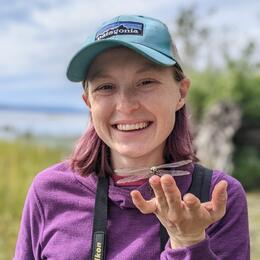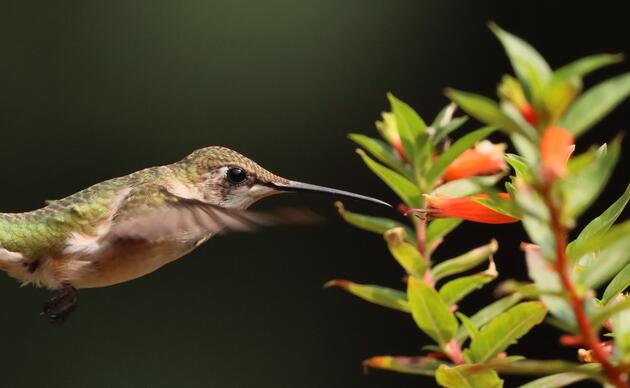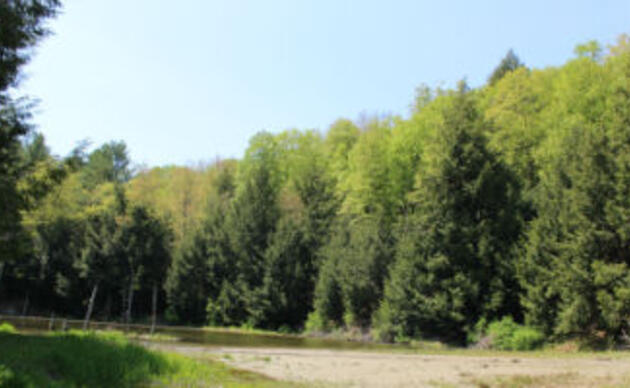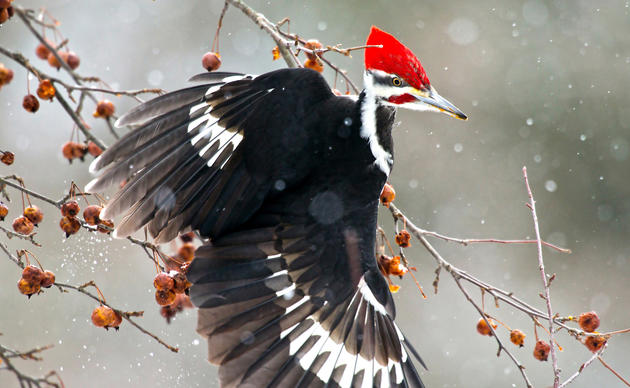Welcome to the UnSchool Blog! Each month, I will share what we get up to along with additional resources and activities for your at-home learning.
Last Thursday was the first day of our fall session. It was wonderful to meet the group and see some familiar faces again. I know that we will have a fantastic fall together. We spent our day exploring our space in the sugarbush at Audubon and answering the question, “Are insects important?”
Right from the beginning, kids were excited about catching critters. We caught several caterpillars and daddy long-legs before we even started our morning meeting. After snack, we organized plastic critters by their similarities. The students quickly formed one group of critters with no legs, one with 6 legs, and one with more than 6 legs. The critters with 6 legs are insects. Insects also have three body sections: head, abdomen, and thorax. Spiders have 8 legs and two body parts: the cephalothorax (fused head and thorax) and the abdomen. This means that the daddy long-legs that we saw earlier was an arachnid with 8 legs, but not a spider, as it only has one body part. Check out this Britannica article for more information on daddy long-legs: Daddy longlegs | Arachnid, Venomous, Poison, Harvestman, & Opiliones | Britannica.
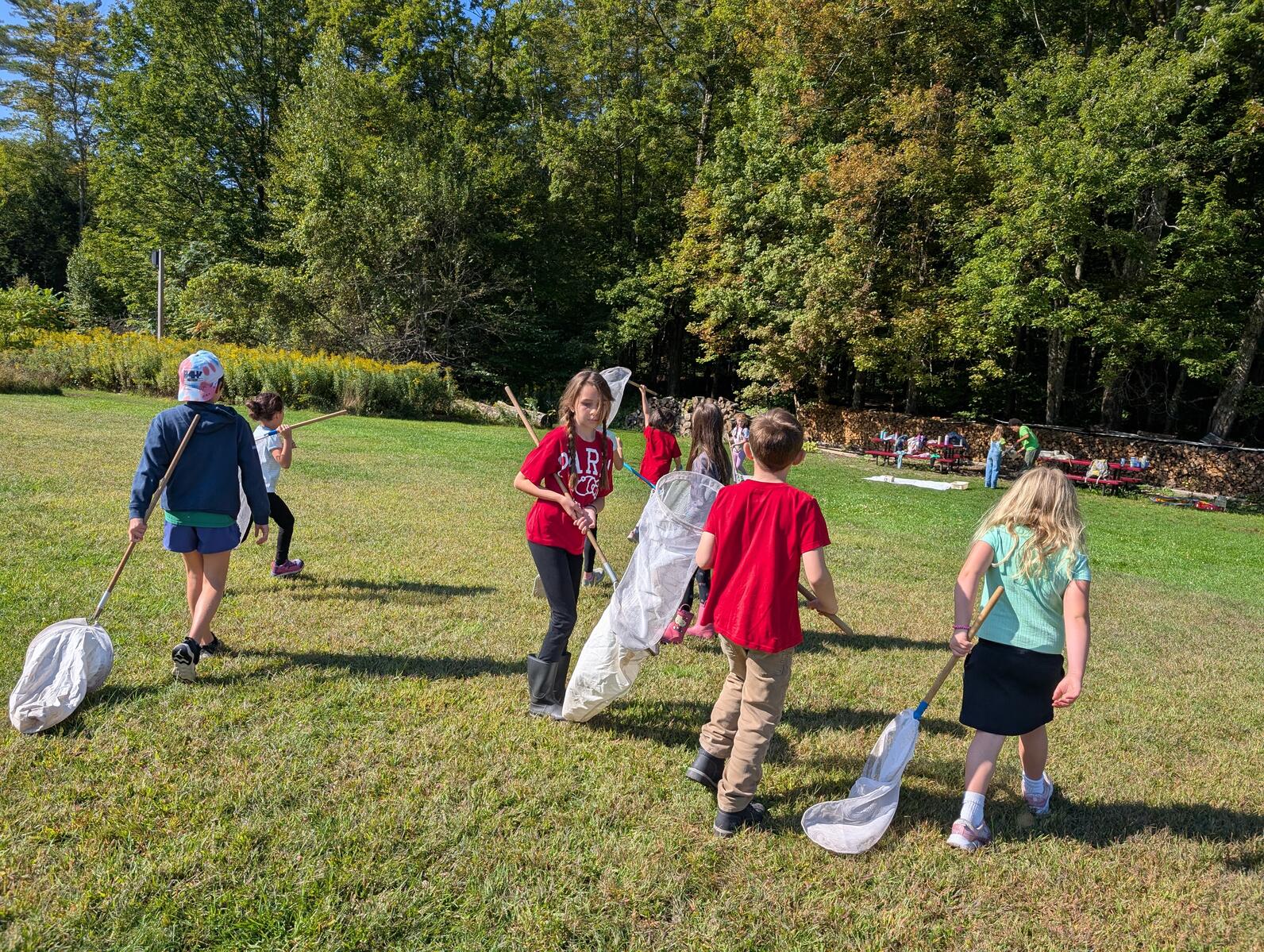
Next, we headed to the sugarhouse field with sweep nets to catch insects in the tall grass. We found bees, dragonflies, beetles, butterflies, stink bugs, grasshoppers, crickets, and many more. The kids loved looking at and identifying all the critters we found.

Once we had our fill of catching insects, everyone turned into bees for a game about pollination. Each bee had a sponge with which to collect nectar (water) from flowers (hula hoops). Each flower also housed markers (pollen) of one color. When a bee collected nectar from a flower, they also took a marker and left a marker they’d collected from a different flower. The bees worked together to collect nectar and bring it back to their hive. After a while, a bird (tagger) was added who wanted to “eat” the bees. The kids were very excited about the game and filled the entire beehive with nectar.

After the game, the kids made some observations about what happened during the game. The flowers closer to the hive were visited more often. The bird also stayed near the hive to catch more bees. Each flower had markers of different colors now, representing how the bees were able to move pollen around to different flowers. This is how flowers can make seeds that will grow into more plants, by exchanging pollen. We revisited our initial question: Are insects important? The kids all answered a resounding yes. Why are insects important? They pollinate flowers and provide food for other animals. For more information about bees, you can read Audubon Adventures: The Buzz About Native Bees, a mini magazine for kids.
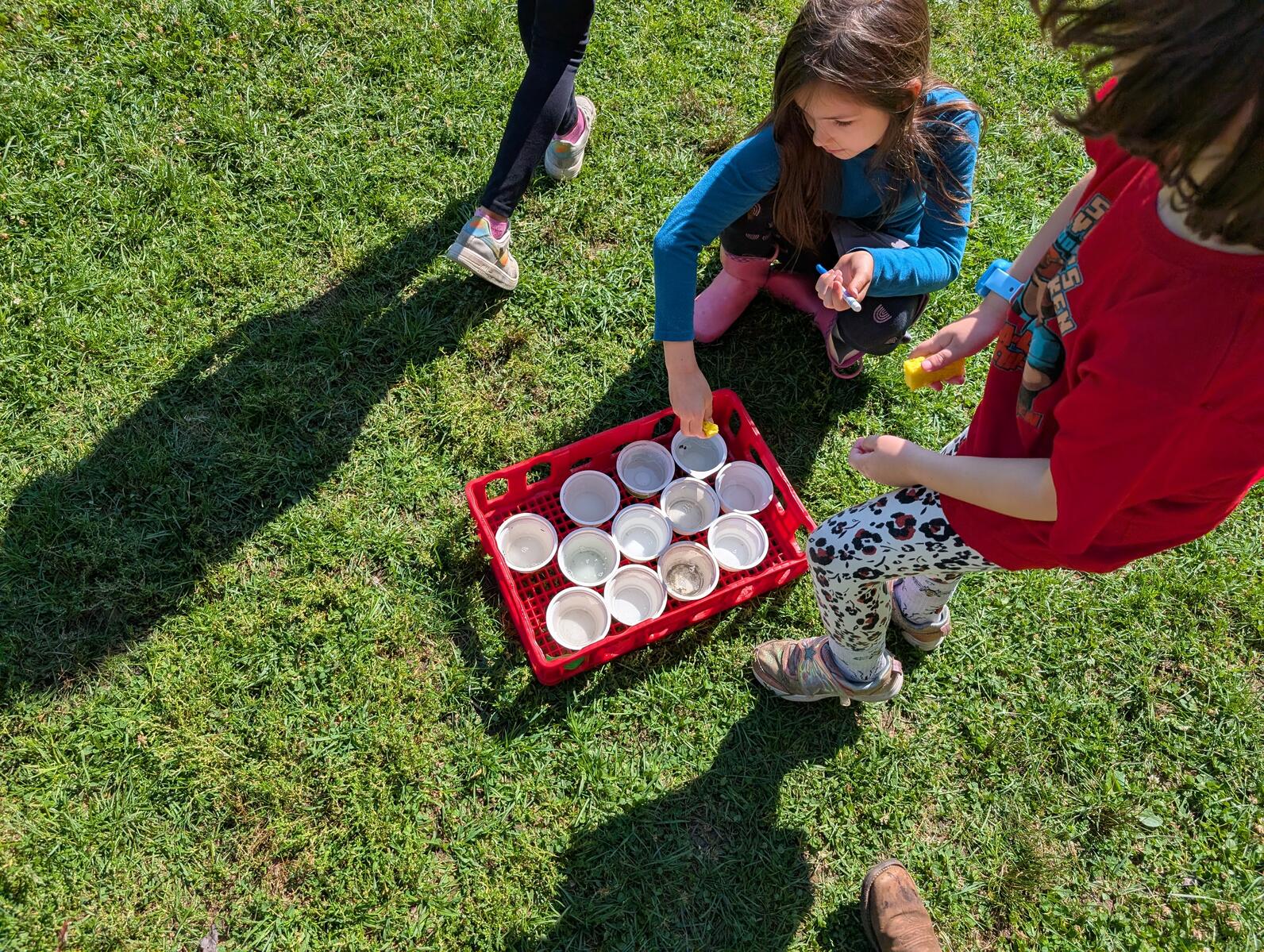
Before lunch, we introduced phenology, the study of the changing seasons. Each student received a small slice of a circle to bring to a sit spot in the forest and draw what September looks like. Then they were able to add more notes and drawings about their observations from the day into their nature journals. Each month we will add a new phenology slice until we create a full phenology wheel with all the changes they will see at Audubon throughout the seasons.
After lunch, we rounded out our day with some time to free-play and look for critters in the forest. Our most exciting find was a tiny yellow-spotted salamander!

